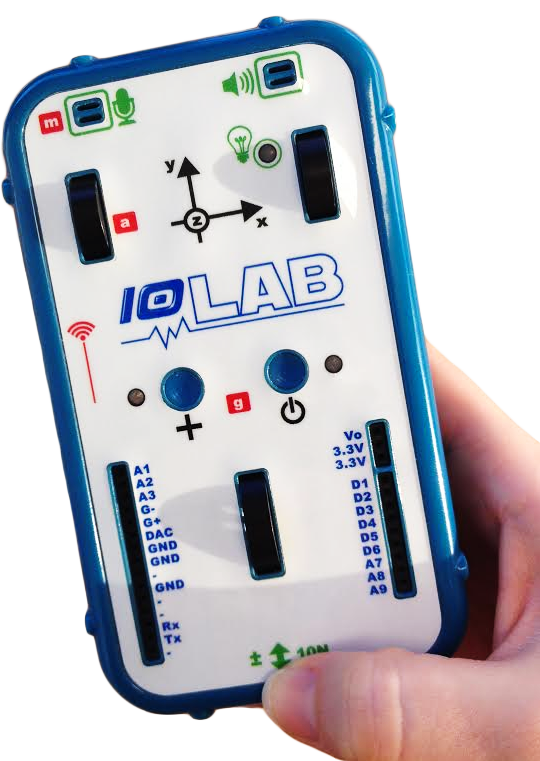Getting and Running the Application
Windows Get the latest PC versions below.
IOLabCEF_win32_0.29.863.zip
Extract the folder that inside the ZIP file and put it on your desktop (or anywhere else you want to keep the code and any data saved by the application). Enter the folder and double-click on the file IOLabCEF.bat
IOLabCEF_win32_0.27.847.zip
IOLabCEF_win32_0.24.788m.zip (small change to improve circuit experiments)
IOLabCEF_win32_0.24.788.zip
IOLabCEF_win32_0.22.671.zip
IOLabCEF_win32_0.21.658.zip
IOLabCEF_win32_0.20.651.zip
IOLabCEF_win32_0.19.650.zip
IOLabCEF_win32_0.17.621.zip
IOLabCEF_win32_0.17.605.zip
IOLabCEF_win32_0.17.569.zip
IOLabCEF_win32_0.17.548.zip
IOLabCEF_win32_0.17.545.zip
Mac Get the latest Mac versions below.
IOLabCEF_macosx_0.29.863.zip
You need to be running OSX 10.7.5 or higher. Put the downloaded and extracted application IOLab.app wherever you want it. Double-click on IOLab.app to run the application.
IOLabCEF_macosx_0.27.847.zip
IOLabCEF_macosx_0.24.788m.zip (small change to improve circuit experiments)
IOLabCEF_macosx_0.24.788.zip
IOLabCEF_macosx_0.22.671.zip
IOLabCEF_macosx_0.20.651.zip
IOLabCEF_macosx_0.19.650.zip
IOLabCEF_macosx_0.17.621.zip
IOLabCEF_macosx_0.17.605.zip
IOLabCEF_macosx_0.17.569.zip
IOLabCEF_macosx_0.17.548.zip
IOLabCEF_macosx_0.17.545.zip
Features of the latest version
- Big Change for Windows users in version 0.29.863. The data and calibration constants are now stored in the Documents folder, which means that they persist between software versions, making your life better. This has always been the case for the Mac software.
- BUGFIX - 0.28.857: fix frequent crashing in Win-8 when reloading data
- Improved zooming features (can zoom vertially and horizontally separately if desired)
- New 9-lead ECG acquisistion mode
- Allows the user to re-load and re-analyze the data from a previous acquisition
Tips for running the application (version 0.17.605 and above)
- Plug in the dongle and turn on the IOLab device.
- Start the application as described above (slightly different for Mac & PC).
- Select the sensors you want to read out from the list on the left - the system readout will be optimized for the selected sensors and charts to display the data from the selected sensors will created.
- Click on the Record button to start data acquisition, and click on the Stop button to stop.
- The Data Smoothing button selects how many points are included in the smoothing average.
- Selecting a number N with the FFT drop-down menu displays an N-point FFT (also works when recording).
- The data used in the calculation are shaded gray in the data plot. Moving the mouse moves the FFT region, left-clicking locks & unlocks the FFT region
- The FFT plot itself can be shifted left & right by dragging it with the mouse.

Navigating the Plots
When the "graph" icon is selected (the default), the mouse is used to select regions for analysis. Left-click and dragging will select a region the region (shaded blue) for which averages are displayed. Left-clicking without dragging will move the FFT region (shaded gray) when FFT analysis is enabled.
When the "magnifying glass" icon is selected, the mouse is used to select a rectangular region for zooming. Double clicking on the plot in this mode will reset the zoom to the initial default values. Zooming in on one of the plots sets the time axis for all of the plots to be set to the same region as the plot being zoomed on, keeping the time axis the same on all plots.
When the "compass" icon is selected the mouse is used to pan left & right & up & down on a plot. Moving one plot horizontally causes all of the plots to be moved horizontally, keeping the time axis the same on all plots.
Saving Your Data
You can save data after you record it by click on on the Export Data button. On your PC the data is written to a folder called IOLab-Workfiles inside the application folder. On your Mac the data is written to a folder called IOLab-Workfiles in your Document area.
Calibrating Your Sensors
- 1. Erase data and start over by clicking on the Reset button.
- 2. When the system is freshly Reset and no sensors are selected, you can select the Calibration function. (You should definitely do this before using the Force probe).